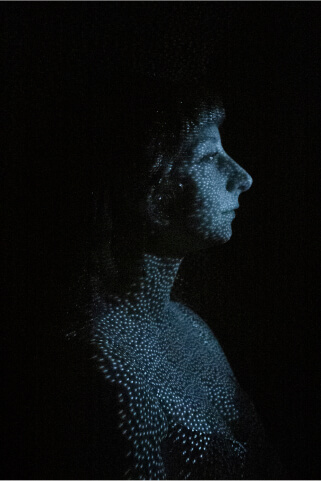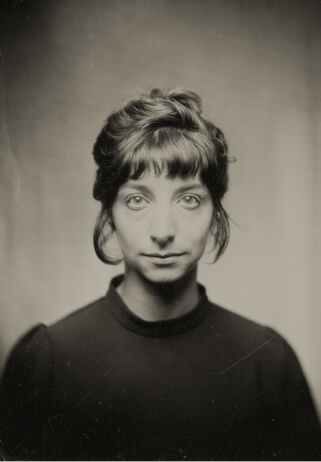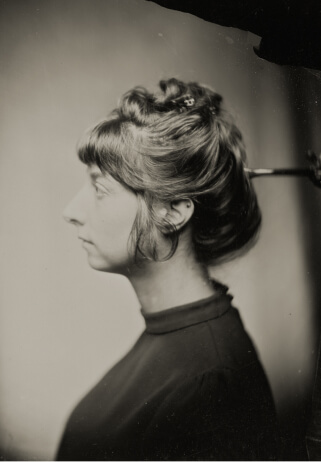For this issue’s opening portfolio, Hue commissioned Jolene Lupo, Photography ’11, to create a series of self-portraits. For the cover, she used a special camera to capture the infrared dots that the iPhone projects onto the user as part of its facial-recognition technology. The image reveals the invisible connection between us and our phones.

While the cover image has a futuristic feel, Lupo’s “mugshots” (below) employ a historical wet-plate collodion process used by Alphonse Bertillon, the French police officer who standardized mugshots and crime scene photographs in Paris in the 1880s. Lupo used a 1918 camera for these self-portraits, with a modern flash to make the image capture instantaneous. Her colleague Geoffrey Berliner developed the images in the darkroom because Lupo was pregnant and wanted to avoid the chemicals.


For the last image (below) Lupo used a wet-plate technique to process her fingerprints, resulting in a smudged, watery abstract artwork. During the pandemic, she had been thinking about the consequences of touch and the way fingerprints linger on surfaces. The idea for the image came to her in a dream.

Lupo teaches wet-plate collodion at the Penumbra Foundation, a New York City nonprofit that specializes in historical photographic processes; she was the tintype studio manager for seven years.
Read more about Lupo’s job at the New York City Office of the Chief Medical Examiner here.